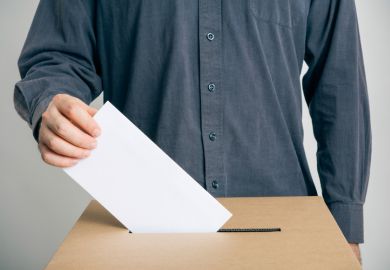Psychologist Walter Mischel developed the “marshmallow test” in the 1960s as a way of studying preschoolers’ ability to delay gratification. Children were left alone in a room, sitting in front of a single marshmallow, and provided with a bell that they could ring at any time to call back the researcher and then eat the marshmallow. But if they could refrain until the researcher came back of her own accord, they would be given two marshmallows. You have doubtless heard of the test: as a seminal experiment that spawned countless research programmes on self-control, it is a staple of works on the topic. Now, with The Marshmallow Test, which combines scholarly argument with self-help tips, policy proposals and anecdotes from his career, Mischel himself joins the fray.
As a postgraduate student in clinical psychology keen to make a difference to people’s lives, Mischel recounts, he thought he could apply some of the concepts he was learning to work he was doing with a group of disadvantaged teenagers. One evening, the teenagers seemed particularly attentive, and before long Mischel spotted that one of them had set the back of his jacket on fire. The concepts Mischel was being taught were irrelevant to these young people, he realised, and this spurred him to pursue a research career that would allow him to help people to improve their lives.
If self-control is a skill that some of us have more of, then how can successful people such as Bill Clinton or Tiger Woods have had such public lapses?
The starting point for his self-control research was his close observation of the children in the marshmallow test. Tactics used by those who succeeded in resisting temptation included closing their eyes, avoiding looking at the treat, repeating aloud that they could have two treats if they waited, pushing the bell away, singing to themselves and even falling asleep. One particularly successful tactic involved distraction. Mischel investigated further and discovered that when the marshmallows were covered, children found it much easier to wait. He wondered if they could use abstraction to similar effect, drawing on Freud’s idea that creating a “hallucinatory image” of objects of desire (for Freud, the mother’s breasts) enabled infants to inhibit the impulse for immediate gratification. Indeed, Mischel found that giving the children a life-sized, realistic photo instead of an actual marshmallow doubled the average time that children waited. It was possible to get the same increase in waiting time when an actual marshmallow was in front of them if they were instructed to use mental abstraction: “imagine it’s a picture; put a frame around it in your head”. What is more, the effect of substituting a picture was reversed if the children were told to make believe that the reward in the picture was real.
He explains these results by invoking the sort of “two systems” hypothesis popularised by Daniel Kahneman in Thinking, Fast and Slow: the idea that the brain has one fast automatic system for decision-making and another slower and effortful one. Mischel connects these to levels of emotional arousal, calling them the “hot” and “cool” systems. Marshmallows have arousing and motivating “hot” qualities, such as being tasty, which make you want to eat them, and other non-emotional cognitive “cool” features, such as being white and soft. Arousing the hot representations automatically triggers the action of eating the marshmallow, whereas cool representations support the system involving cognitive processing, which enables delay. Changing how you mentally represent a stimulus can change its impact on what you feel and what you do. When Mischel gave up smoking, he observes, he enlisted a memory of a cancer victim being taken for radiation, which he conjured up when he felt a craving.
Nevertheless, it is not always a good thing to be shielded from emotional cues. Self-control can have paradoxical effects. People with high self-control tend to stay calm when making risky decisions, so they are shielded from the stress that people with low self-control feel on making losses. When making a series of risky decisions that are turning out badly, stress and anxiety leads people with low self-control to quit before they go broke. In contrast, under experimental conditions, people who were high in self-control failed to react to danger signals and lost more money than people with low self-control – which Mischel offers as an intriguing explanation for behaviour in the financial sector leading up to the 2008 financial crisis.
Twelve years after the original marshmallow test, follow-up studies revealed that, as adolescents, the children who had waited longer displayed more self-control, had better social and cognitive functioning, and scored higher on intelligence tests. As young adults, they had reached higher educational levels, were less likely to use drugs and had a lower body mass index. Brain scans showed that they had more activity in parts of the brain associated with effective problem solving than those who had not been able to wait.
However, Mischel is at pains to stress that self-control is not genetically predetermined, but can be taught. He is particularly clear on the importance of mindset, the idea that a person’s theory about the possibility of mastery influences how much self-control he or she can actually exert. He cites research by Carol Dweck that shows that if one is to successfully develop self-control, then it is important to think of it as a skill that can be honed and not as an ability that is fixed at birth.
If self-control is a skill that some of us have more of, then how can successful people such as Bill Clinton or Tiger Woods, who must have plenty of self-control in order to achieve their professional success, have had such public lapses? Mischel’s answer builds on his own devastating critique of traditional notions of personality: he proposes that personality consists of “if-then” signatures. These work as follows: someone who is aggressive will not be aggressive in all situations; rather, he or she will be aggressive in response to particular cues. For instance, an aggressive child may be aggressive when other children tease her or when adults punish her. She need not be aggressive in response to all possible cues for aggression, but she will consistently be aggressive in response to particular cues. If those cues occur, then she will exhibit aggressive behaviour. Extrapolating to self-control, it is possible to exercise self-control in many areas of one’s life but to lapse when presented with a specific type of cue, such as sexual temptation. It also follows that it may be valuable to keep a diary in order to learn the cues that lead to destructive behaviours.
The Marshmallow Test is a tour de force. Despite its serious academic content, it wears its learning lightly. Mischel has never been one to shy away from conflict, taking on not only the personality psychologists but also the clinicians to whom he dared to point out that their professional diagnosis was not predictive of which psychiatric patients would be readmitted – instead, the most reliable indicator was the weight of their files. And here, he takes issue with the popular theory of ego depletion, the idea that self-control draws on a limited pool of mental energy. It is valuable for readers to be reminded that science is contested, as popular books frequently give a false impression of consensus.
Although Mischel’s experiments have become justly famous, it has been largely through the popularising work of other people. It is to be hoped that this book will make him as much of a household name as his marshmallows are.
The author
In 1938, the eight-year-old Walter Mischel – today the Robert Johnston Niven professor of humane letters in the department of psychology at Columbia University – fled Nazi-occupied Vienna with his family for the US. His parents opened a shop in Brooklyn, and Mischel studied psychology at New York University and then Ohio State University.
His first paper detailing the “marshmallow test”, conducted at Stanford University’s Bing Nursery School, was published in the Journal of Personality and Social Psychology in 1972. Mischel then moved on to other subjects, thinking, as he recalled in a recent interview, that “there are only so many things you can do with kids trying not to eat marshmallows”. But serendipitous follow-up research led to papers in Science (1989) and Developmental Psychology (1990), and informed countless studies by others.
Indeed, as Michael Bourne noted in The New York Times, the marshmallow test is not only a tale that “captured the public imagination because it is a funny story, easily told”, but is also an object of fascination academy-wide. “If you doubt the ubiquity of the Mischel study,” said Bourne, “try this simple experiment: put a few social-policy geeks in a room and ask them about willpower, then see how long it takes before somebody brings up the four-year-olds and then the marshmallows. My bet is you wouldn’t have to wait more than a minute.”
Mischel sees the studies not as predictors of later success or failure, but as clues to self-improvement strategies. He told the New Yorker, “What we’re really measuring with the marshmallows isn’t willpower or self-control. It’s much more important than that. This task forces kids to find a way to make the situation work for them. They want the second marshmallow, but how can they get it? We can’t control the world, but we can control how we think about it.”
Karen Shook
The Marshmallow Test: Understanding Self-control and How to Master It
By Walter Mischel
Bantam, 336pp, £20.00 and £11.98
ISBN 9780593071311 and 97814481542 (e-book)
Published 25 September 2014
Register to continue
Why register?
- Registration is free and only takes a moment
- Once registered, you can read 3 articles a month
- Sign up for our newsletter
Subscribe
Or subscribe for unlimited access to:
- Unlimited access to news, views, insights & reviews
- Digital editions
- Digital access to THE’s university and college rankings analysis
Already registered or a current subscriber? Login





